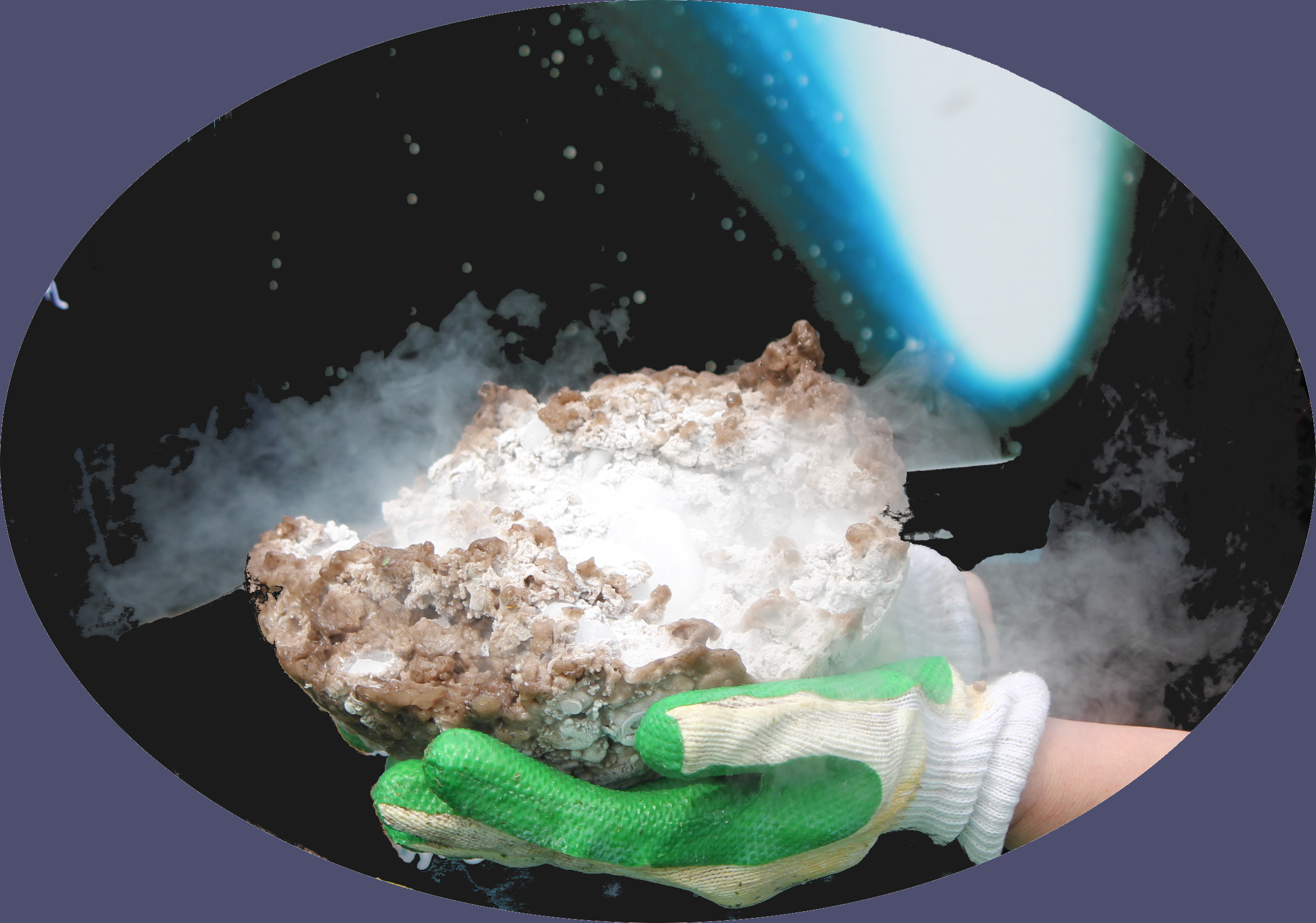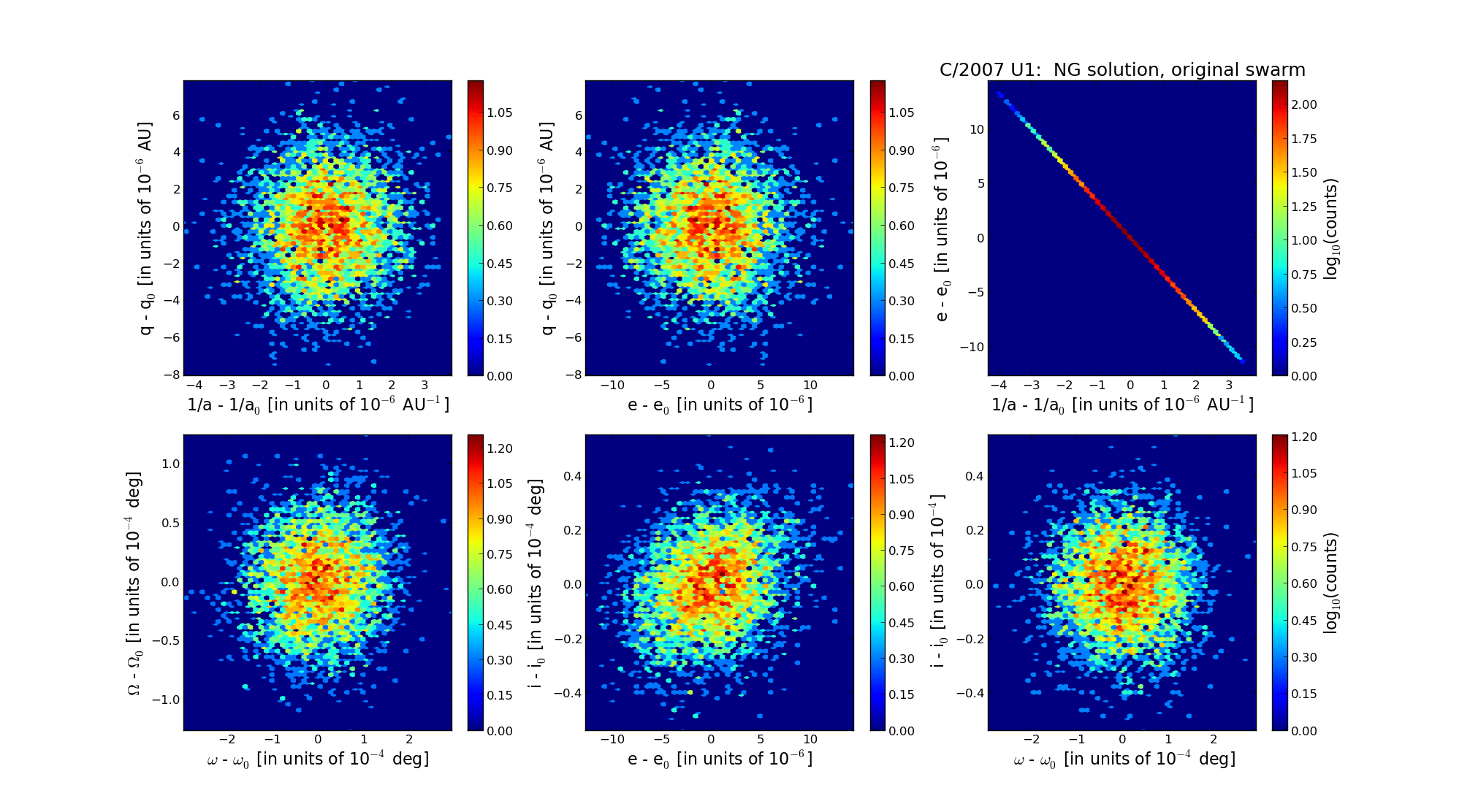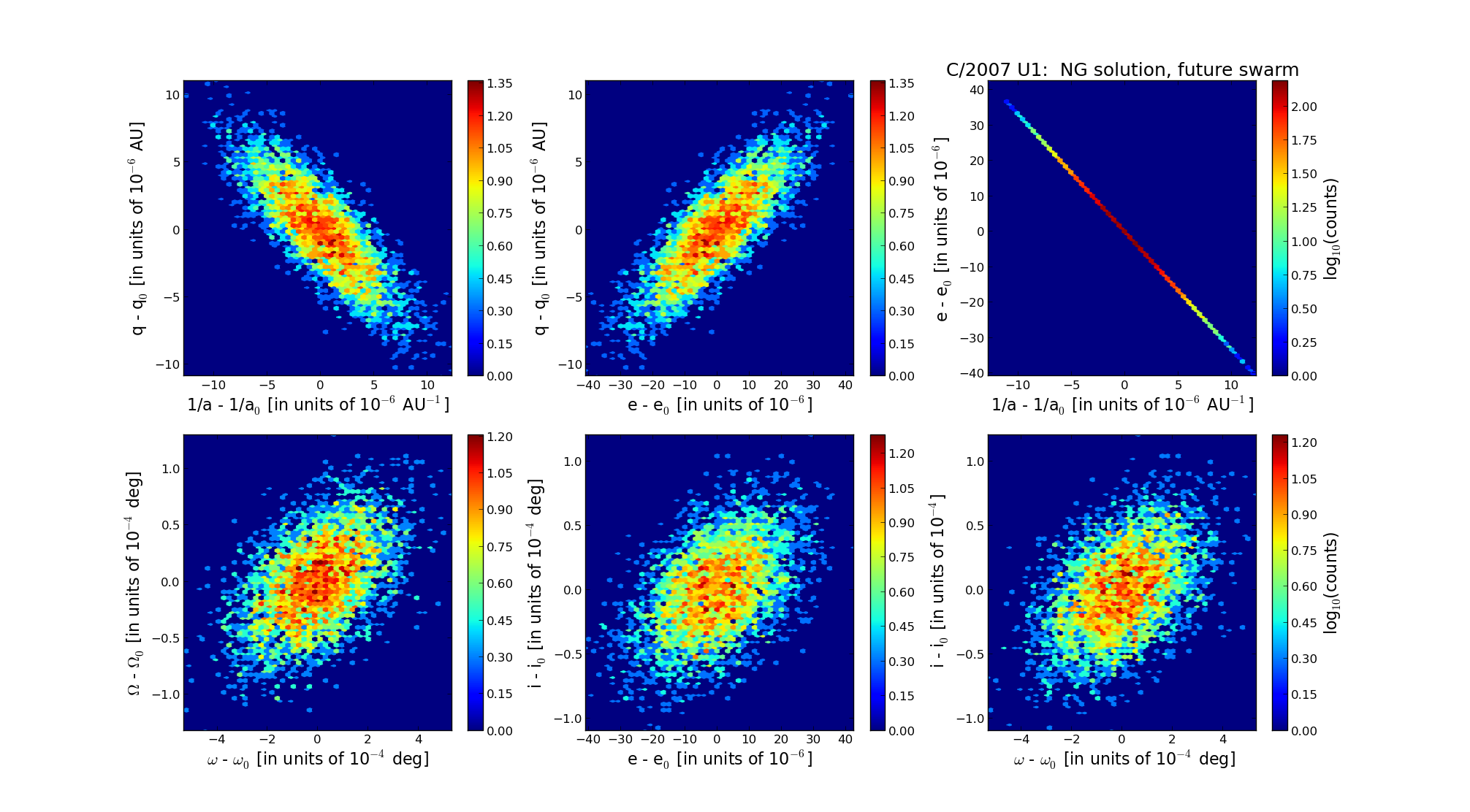| Solar System Dynamics & Planetology Group |
 |
C/2007 U1 LINEAR |  |
| Solar System Dynamics & Planetology Group |
 |
C/2007 U1 LINEAR |  |
| number of observations | 896 |
| number of residuals | 1774 |
| data interval | 2007 Oct. 19 — 2009 Nov. 18 |
| rms [arcsec] | 0.41 |
| orbit quality class | 1a |
| Epoch (TT) | 20080802.0 | = JD 2454680.5 |
| time of perihelion passage (TT) | 20080807.052978 | ± 0.000318 |
| perihelion distance | 3.32916349 | ± 0.00000195 |
| eccentricity | 1.00141625 | ± 0.00000446 |
| argument of perihelion [deg] | 0.928036 | ± 0.000079 |
| longitude of the ascending node [deg] | 50.043066 | ± 0.000020 |
| inclination [deg] | 157.786884 | ± 0.000010 |
| inverse semimajor axis [10-6 au-1] | -425.41 | ± 1.34 |
| Nongravitational parameters [10-8 au/day2] | A1 = 685.490 ± 45.424 | A2 = -221.870 ± 89.191 | A3 = -172.210 ± 18.419 |

| Epoch (TT) | 17040617 | |
| time of perihelion passage (TT) | 20080807.839153 | ± 0.000354 |
| perihelion distance | 3.33102874 | ± 0.00000234 |
| eccentricity | 0.99944731 | ± 0.00000390 |
| argument of perihelion [deg] | 0.975217 | ± 0.000078 |
| longitude of the ascending node [deg] | 50.000626 | ± 0.000034 |
| inclination [deg] | 157.779808 | ± 0.000015 |
| inverse semimajor axis [10-6 au-1] | 165.92 | ± 1.17 |

| Epoch (TT) | 23110924 | |
| time of perihelion passage (TT) | 20080807.586941 | ± 0.000682 |
| perihelion distance | 3.32889293 | ± 0.00000318 |
| eccentricity | 0.99975241 | ± 0.00001201 |
| argument of perihelion [deg] | 1.194660 | ± 0.000152 |
| longitude of the ascending node [deg] | 50.311821 | ± 0.000036 |
| inclination [deg] | 157.785855 | ± 0.000032 |
| inverse semimajor axis [10-6 au-1] | 74.37 | ± 3.61 |